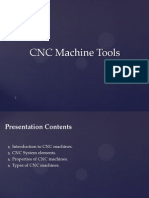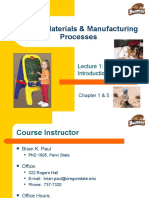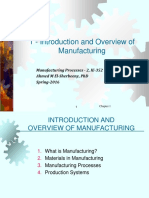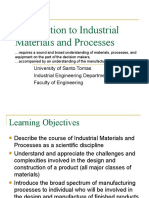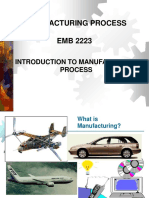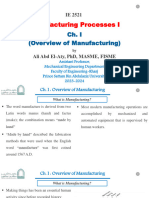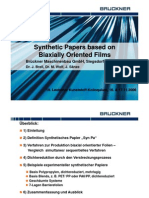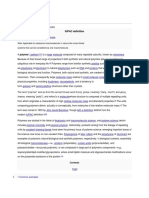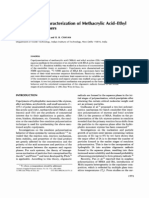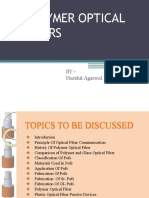1/10/2024
Chapter 1
General
Introduction
Presented by Dr. Minh Tuan HO
minh-tuan.ho@hcmut.edu.vn
ME2071 – Manufacturing Processes
INTRODUCTION AND
OVERVIEW OF MANUFACTURING
I. What is Manufacturing?
II. Materials in Manufacturing
III. Manufacturing Processes
IV. Production Systems
V. Manufacturing Economics
VI. Recent Developments in Manufacturing
1
� 1/10/2024
I. Manufacturing is Important
▪ Making things has been an essential human activity
since before recorded history
▪ Today, the term manufacturing is used for this
activity
▪ Manufacturing is important to the United States and
most other developed and developing nations
▪ Technologically
▪ Economically
Technological Importance
▪ Technology - the application of science to provide
society and its members with those things that are
needed or desired
▪ Technology affects our daily lives, directly and
indirectly, in many ways
▪ Technology provides the products that help our
society and its members live better
2
� 1/10/2024
Technological Importance
Technological Importance
▪ What do these products have in common?
▪ They are all manufactured
▪ They would not be available to our society if they
could not be manufactured
▪ Manufacturing is the essential factor that makes
technology possible
3
� 1/10/2024
Economic Importance
U.S. Economy
Sector: %GDP
Agriculture and natural resources 5
Construction and public utilities 5
Manufacturing 12
Service industries* 78
100
* includes retail, transportation, banking,
communication, education, and government
What is Manufacturing?
▪ The word manufacture is derived from two Latin
words manus (hand) and factus (make); the
combination means “made by hand”
▪ “Made by hand” described the fabrication methods
that were used when the English word
“manufacture” was first coined around 1567 A.D.
▪ Most modern manufacturing operations are
accomplished by mechanized and automated
equipment that is supervised by human workers
4
� 1/10/2024
Manufacturing - Technological
▪ Application of physical and chemical processes to
alter the geometry, properties, and/or appearance of
a starting material to make parts or products
Manufacturing - Economic
▪ Transformation of materials into items of greater value
by one or more processing and/or assembly operations
5
� 1/10/2024
Manufacturing Example:
Artificial Heart Valve
Left: Heart valve Right: Starting titanium billet
Modern Manufacturing
Materials
Processes
Modern
manufacturing
Systems
6
� 1/10/2024
II. Materials in Manufacturing
▪ Most engineering materials can be classified into one of
three basic categories:
1. Metals
2. Ceramics
3. Polymers
▪ Their chemistries are different, and their mechanical and
physical properties are different
▪ In addition, there is a fourth category:
4. Composites
Classification of
engineering
materials
7
� 1/10/2024
1. Metals
▪ Usually alloys, which are composed of two or more
elements, at least one of which is metallic. Two basic
groups:
1. Ferrous metals - based on iron, comprises about
75% of metal tonnage in the world:
▪ Steel and cast iron
2. Nonferrous metals - all other metallic elements
and their alloys:
▪ Aluminum, copper, nickel, silver, tin, etc.
2. Ceramics
▪ Compounds containing metallic (or semi-metallic) and
nonmetallic elements.
▪ Typical nonmetallic elements are oxygen, nitrogen,
and carbon
▪ For processing, ceramics divide into:
1. Crystalline ceramics – includes traditional
ceramics, such as clay, and modern ceramics,
such as alumina (Al2O3)
2. Glasses – mostly based on silica (SiO2)
8
� 1/10/2024
3. Polymers
▪ Compound formed of repeating structural units called
mers, whose atoms share electrons to form very large
molecules. Three categories:
1. Thermoplastic polymers - can be subjected to
multiple heating and cooling cycles without
altering molecular structure
2. Thermosetting polymers - molecules chemically
transform into a rigid structure – cannot reheat
3. Elastomers - shows significant elastic behavior
3. Polymers
9
� 1/10/2024
Fiber-Reinforced Polymer (FRP)
4. Composites
▪ Material consisting of two or more phases that are
processed separately and then bonded together to
achieve properties superior to its constituents
▪ Phase - homogeneous material, such as grains of
identical unit cell structure in a solid metal
▪ Usual structure consists of particles or fibers of
one phase mixed in a second phase
▪ Properties depend on components, physical
shapes of components, and the way they are
combined to form the final material
III. Manufacturing Processes
Two Basic Types
1. Processing operations - transform a work material
from one state of completion to a more advanced
state
▪ Operations that change the geometry, properties,
or appearance of the starting material
2. Assembly operations - join two or more components to
create a new entity
10
� 1/10/2024
Classification of
Manufacturing
Processes
Processing Operations
▪ Alters a material’s shape, physical properties, or
appearance in order to add value
▪ Three categories of processing operations:
1. Shaping operations - alter the geometry of the
starting work material
2. Property-enhancing operations - improve
physical properties without changing shape
3. Surface processing operations - clean, treat,
coat, or deposit material on surface of work
11
� 1/10/2024
Four Categories of
Shaping Processes
1. Solidification processes - starting material is a heated
liquid or semifluid
2. Particulate processing - starting material consists of
powders
3. Deformation processes - starting material is a ductile
solid (commonly metal)
4. Material removal processes - starting material is a
ductile or brittle solid
Solidification Processes
▪ Starting material is heated sufficiently to transform it
into a liquid or highly plastic state
▪ (1) Casting process and (2) casting product
12
� 1/10/2024
Particulate Processing
▪ (1) Starting materials are metal or ceramic powders,
which are (2) pressed and (3) sintered
Deformation Processes
▪ Starting workpart is shaped by application of forces
that exceed the yield strength of the material
▪ Examples: (a) forging and (b) extrusion
13
� 1/10/2024
Material Removal Processes
▪ Excess material removed from the starting piece so what
remains is the desired geometry
▪ Examples: (a) turning, (b) drilling, and (c) milling
Waste in Shaping Processes
▪ It is desirable to minimize waste in part shaping
▪ Material removal processes are wasteful in the unit
operations, but molding and particulate processing
operations waste little material
▪ Terminology for minimum waste processes:
▪ Net shape processes - little or no waste of the
starting material and no machining is required
▪ Near net shape processes - when minimum
machining is required
14
� 1/10/2024
Property-Enhancing Processes
▪ Processes that improve mechanical or physical
properties of work material
▪ Examples:
▪ Heat treatment of metals and glasses
▪ Sintering of powdered metals and ceramics
▪ Part shape is not altered, except unintentionally
▪ Example: unintentional warping of a heat treated
part
Surface Processing Operations
▪ Cleaning - chemical and mechanical processes to
remove dirt, oil, and other surface contaminants
▪ Surface treatments - mechanical working such as
sand blasting, and physical processes like diffusion
▪ Coating and thin film deposition - coating exterior
surface of the workpart
▪ Examples:
▪ Electroplating
▪ Painting
15
� 1/10/2024
Assembly Operations
▪ Two or more separate parts are joined to form a new
entity
▪ Types of assembly operations:
1. Joining processes – create a permanent joint
▪ Welding, brazing, soldering, adhesive bonding
2. Mechanical assembly – fastening by mechanical
methods
▪ Threaded fasteners (screws, bolts and nuts);
press fitting, expansion fits
Production Machines and
Tooling
▪ Manufacturing operations are accomplished using
machinery and tooling (and people)
▪ Types of production machines:
▪ Machine tools - power-driven machines used to
operate cutting tools previously operated manually
▪ Other production equipment:
▪ Presses
▪ Forge hammers,
▪ Plastic injection molding machines
16
� 1/10/2024
Production Machines and
Tooling
IV. Production Systems
▪ People, equipment, and procedures used for the
materials and processes that constitute a firm's
manufacturing operations
▪ A manufacturing firm must have systems and
procedures to efficiently accomplish its production
▪ Two categories of production systems:
▪ Production facilities
▪ Manufacturing support systems
▪ People make the systems work
17
� 1/10/2024
Model of the Production System
Production Facilities
▪ The factory, production equipment, and material
handling systems
▪ Includes the plant layout
▪ Equipment usually organized into logical groupings,
called manufacturing systems
▪ Examples:
▪ Automated production line
▪ Machine cell consisting of three machine tools
▪ Production facilities "touch" the product
18
� 1/10/2024
Facilities vs Product Quantities
▪ A company designs its manufacturing systems and
organizes its factories to serve the particular mission
of each plant
▪ Certain types of production facilities are recognized as
most appropriate for a given type of manufacturing:
1. Low production – 1 to 100
2. Medium production – 100 to 10,000
3. High production – 10,000 to >1,000,000
Low Production
▪ Job shop is the term used for this type of production
facility
▪ A job shop makes low quantities of specialized and
customized products
▪ Products are typically complex, e.g., space
capsules, prototype aircraft, special machinery
▪ Equipment in a job shop is general purpose
▪ Labor force is highly skilled
▪ Designed for maximum flexibility
19
� 1/10/2024
Fixed-Position Plant Layout
Medium Production
▪ Two different types of facility, depending on product
variety:
▪ Batch production
▪ Suited to medium and hard product variety
▪ Setups required between batches
▪ Cellular manufacturing
▪ Suited to soft product variety
▪ Worker cells organized to process parts without
setups between different part styles
20
� 1/10/2024
Process Plant Layout
Cellular Plant Layout
21
� 1/10/2024
High Production
▪ Often referred to as mass production
▪ High demand for product
▪ Manufacturing system dedicated to the
production of that product
▪ Two categories of mass production:
1. Quantity production
2. Flow line production
Quantity Production
▪ Mass production of single parts on single machine or
small numbers of machines
▪ Typically involves standard machines equipped
with special tooling
▪ Equipment is dedicated full-time to the production
of one part or product type
▪ Typical layouts used in quantity production are
process layout and cellular layout
22
� 1/10/2024
Flow Line Production
▪ Multiple machines or workstations arranged in
sequence, as in a production line
▪ Product is complex - requires multiple processing
and/or assembly operations
▪ Work units are physically moved through the
sequence to complete the product
▪ Workstations and equipment are designed
specifically for the product to maximize efficiency
Product Plant Layout
23
� 1/10/2024
Manufacturing Support Systems
▪ A company must organize itself to design the
processes and equipment, plan and control
production, and satisfy product quality requirements
▪ Accomplished by manufacturing support systems
▪ The people and procedures by which a
company manages its production operations
▪ Typical departments:
▪ Manufacturing engineering, Production
planning and control, Quality control
References
1. M.P. Groover, Fundamentals of Modern Manufacturing
5/e, John Wiley & Sons, 2012
2. S. Kalpakjian, S.R. Schmid, Manufacturing engineering
and technology in SI units 8/e, Pearson, 2021
3. T.D. Sơn, T.A. Sơn, H.T. Hưng, Giáo trình Các Quá
Trình Chế Tạo, NXB ĐHQG Tp. HCM, 2018
Thank you!
24
































